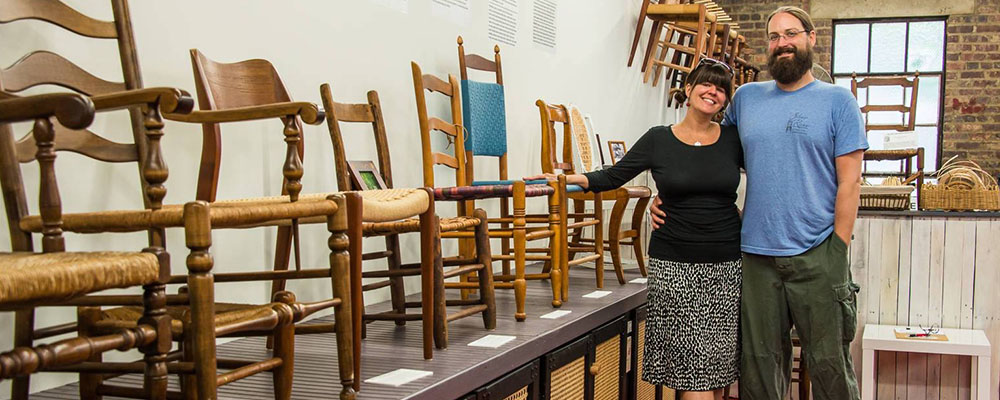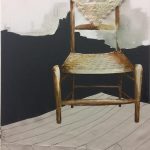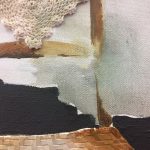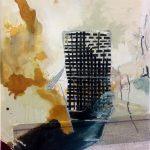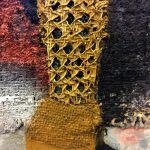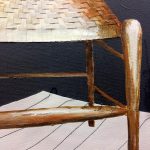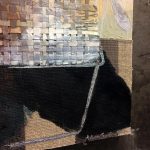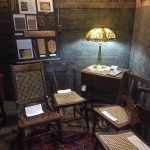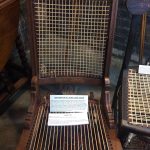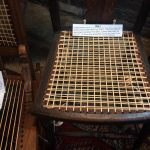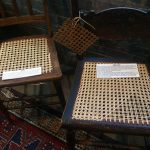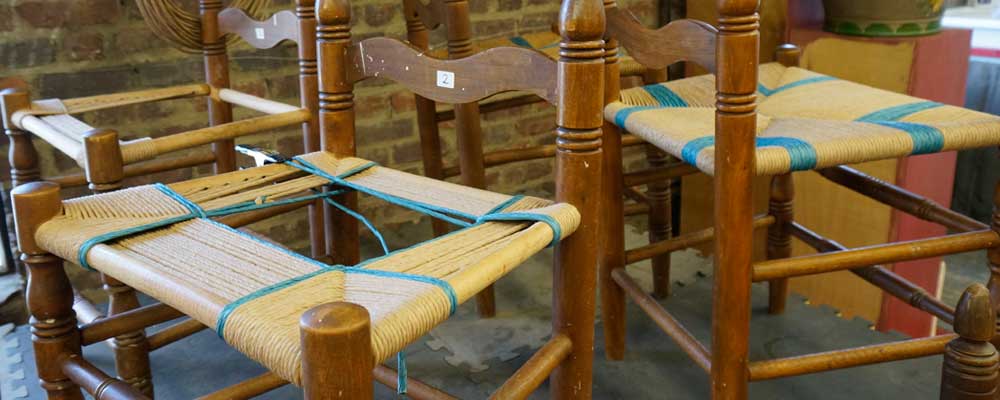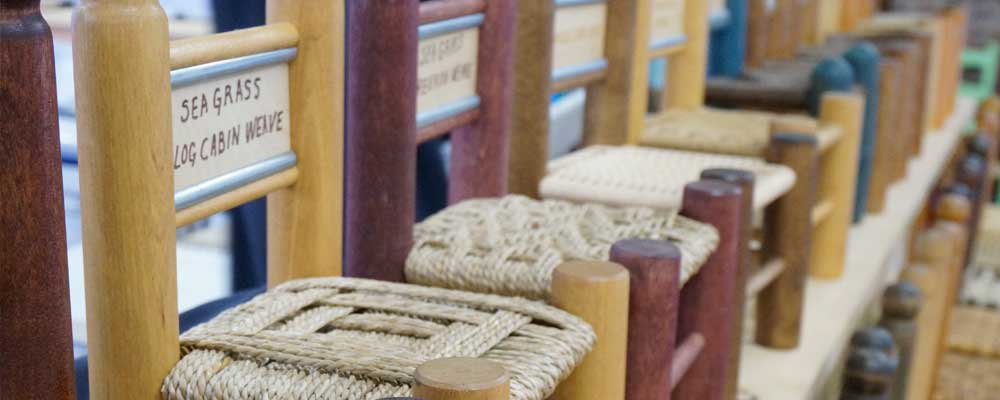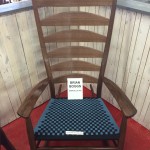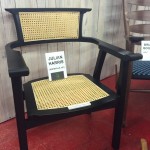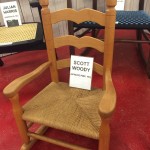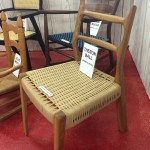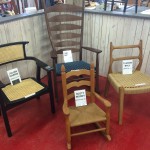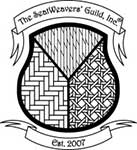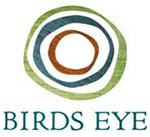On Exhibit
ASHLEY SAUDER MILLER MIXED MEDIA PAINTINGS
“Fusing the nostaligic with the contemporary and the flat with the illusion of three dimensions, Miller takes graphite, acrylic paint, oil bar, oil pastel, leather, lace and more to places they’ve never been…but where they should sit down and stay awhile.” – Betsy DiJulio, VEER Magazine Exhibition Review
Ashley Sauder Miller lives with her husband and four children in Harrisonburg, VA. She earned undergraduate degrees from Hesston College (Kansas) and Eastern Mennonite University and her Master of Fine Arts from James Madison University with an emphasis in painting and drawing. After inheriting a caned chair with a broken seat, she taught herself to weave the pattern using string. Thus began her love affair with chairs. She has since almost exclusively devoted her art to chairs, some woven, some upholstered. She uses lace, cane, fabric, and her childrens’ artwork to create these striking contemporary mixed media paintings…she has even gone as far as cutting up some of her old paintings to weave into chairs.
Brandy found her on Instagram and they became immediate social media buddies until finally Ashley brought dozens of pieces of her artwork to Asheville. Purchase her original artwork on large canvas, wood panels, and smaller original paintings at Silver River Chairs. Keep up with her work on Instagram.
We are open by appointment only due to working on a book and shooting instructional videos
See what’s happening on Instagram or take a virtual tour of our museum
Our free museum serves to educate our students and visitors to the River Arts District. Enjoy our rotating collection of 100+ woven chairs that showcase the diversity of the craft. We kept the workshop and classroom area open so you get to observe the weaving process.
All restoration & class fees keep the chair museum free and open to the public. Chair nerd tshirts and stickers are for sale as fundraisers for the museum.
Get involved:
- Donate your chairs or chair books
- Share your photos and tag us on Facebook, Instagram, & Twitter
- Take a class
- Share your story. Email SilverRiverChairs@gmail.com
School visits:
Kids are really good at chair caning. We have a hands-on weaving station in our shop. Hire us to demonstrate chair caning in a history, science, geography, or art class setting. Schedule your visit by calling 828-707-4553 or emailing SilverRiverChairs@gmail.com.
Previous Exhibits
ANATOMY OF A LACED CANE CHAIR
The standard 6-way process of weaving a laced cane seat involves a pair of verticals, a pair of horizontals, and two directions of diagonal strands of rattan or cane. The seventh step (not always present on chairs) is the binder or beading, which is decorative and serves to cover the holes through which the cane is woven. See the particulars of each step in our entryway at Silver River.
ANATOMY OF A RUSH CHAIR
Created by master rush weaver David Klingler.
A progression of six chairs beginning with the bare bones and stepping through several way-points in the rush process. Both students and visitors are allowed an in-depth look inside a typical rush chair.
TINY CHAIRS
A STUDY IN PATTERNS
On Loan from MINDY KING August 2015-August 2016
(www.chairweaver.com)
Mindy King is a second generation chair caner, mentored by her father, Rev. Ben Edwards who has been practicing the art for over 46 years. She holds a BFA degree in Woodworking and Furniture Design from the School for American Crafts at Rochester Institute of Technology and has been working with wood since 1972. Her love of chair restoration began in high school when she repaired chairs and other fine furniture for an antique refinisher in Dublin, Ohio.
Contemporary Chairmakers Exhibit
While some may think of Chair Caning as a “lost art,” this display disproves that charming, shamefully under-examined theory. Rush woven chairs have been around for millennia and are still found in popular furniture catalogs and decor magazines. Caned furniture has gone in and out of style since its initial craze in 1680s Europe, to the Industrial Revolution, to the Mid-Century Design Boom of the 1950s & 1960s. Regardless of the materials. Woven furniture is always present.
Chairs are special for many reasons and they are notoriously difficult to design. Woven seats are comfortable, beautiful, and are preferred elements of design throughout the world today. These luxury chairmakers, classic chair makers, and contemporary design students prove that, in Western North Carolina, chair caning is a Thriving Art.
Chairs by Theron Ball and Julian Harris of The Haywood Community College Professional Crafts Program, Brian Boggs Chairmakers, and Woody’s Chair Shop.

